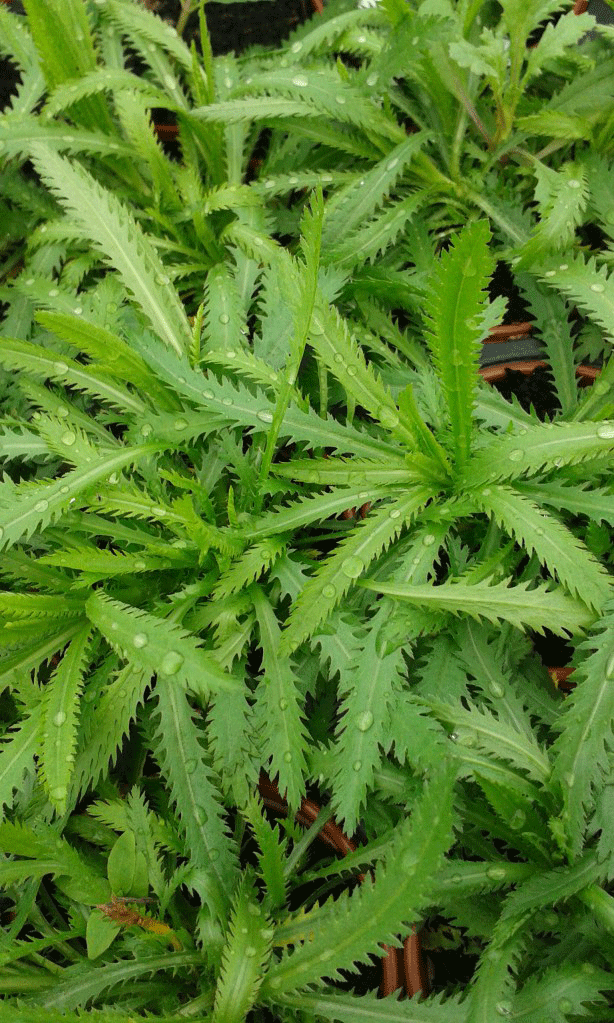From the family Asteraceae.
Native to Switzerland, English mace is now cultivated in northern temperate countries. This culinary herb is little known and under used.
English mace belongs to the Achillea genus, named after Achilles, who is said to have discovered the medicinal properties of the genus. There is no direct historical record of English mace itself apart from the fact that it was discovered in Switzerland in 1798.
VARIETIES
Achillea ageratum
English Mace
Hardy perennial. Ht 30–45 cm when in flower. Spread 30 cm. Clusters of small cream flowers that look very Victorian in summer. Leaves brightish green, narrow and very deeply serrated.
CULTIVATION
Propagation
Cuttings
This is the best method for the propagation of a large number of plants. Take softwood cuttings in late summer; protect from wilting as they will be very soft. Use a seed compost mixed in equal parts with composted fine bark. When well-rooted, harden off and plant out in the garden 30 cm apart.
Division
If you require only a few plants it is best to propagate by division. Either divide the plant in early spring – it is one of the first to appear – or in autumn. Replant in the garden in a prepared site. As this is a hardy plant it will not need protection, but if you leave division until the frosts are imminent, winter the divided plants in a cold frame or cold greenhouse.
Pests and Diseases
Mace, in most cases, is free from pests and diseases.
Garden Cultivation
This fully hardy plant, which even flourishes on heavy soil, prefers a sunny, well-drained site. It starts the season off as a cluster of low-growing, deeply serrated leaves and then develops long, flowering stems in summer. Cut back after flowering for a fresh supply of leaves and to encourage a second flowering crop. When in flower this plant may need staking in a windy, exposed site.
Harvesting
Cut fresh leaves when you wish. For freezing – the best method of preserving – cut before flowering and freeze in small containers. Pick the flowers during the summer. Collect in small bunches and hang upside down to dry. Both flowers and leaves dry particularly well.
CONTAINER GROWING
For a tall flowering plant this looks most attractive in a terracotta pot. Make sure it has a wide base to allow for its height later in the season. Use a soil-based compost mixed in equal parts with composted fine bark. Water regularly thoughout the growing season and give a liquid feed (according to manufacturer’s instructions) in the summer months during flowering. Cut back after flowering to stop the plant from toppling over and encourage new growth. As this plant dies back in winter, allow the compost to become nearly dry, and winter the container in a cold greenhouse or cold frame.
OTHER USES
Flowers in dried flower arrangements.
CULINARY
The chopped leaves can be used to stuff chicken, flavour soups, stews, and to sprinkle on potato salads, rice and pasta dishes. The leaf has a mild, warm, aromatic flavour and combines well with other herbs.
Recipes


